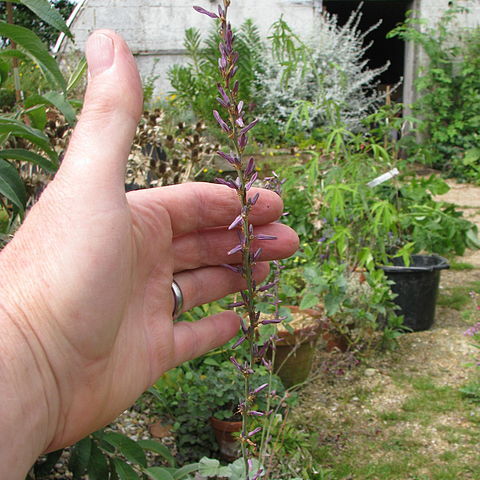A herb. It keeps growing from year to year and has rhizomes or underground stems. The rhizomes are 10 cm long by 0.5-1.7 cm wide. The leaves develop from the base and are grass like. They are 10-60 cm long by 0.15-1 cm wide. The scape is 35-100 cm long. The flowers are pink, purple or white. The fruit is a capsule which is 0.8-1 cm long by 0.3-0.6 cm wide. It has 6 prominent angles. The seeds are black.

